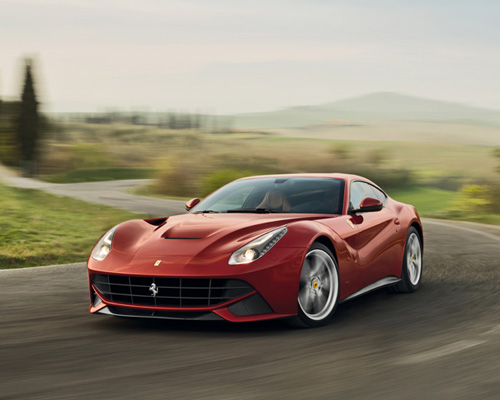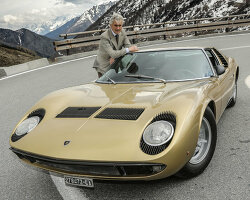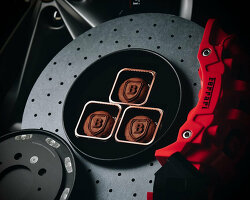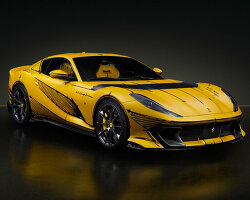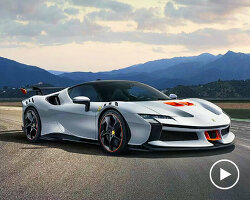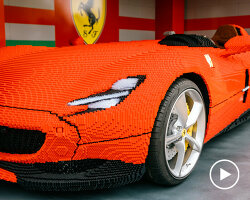interview with flavio manzoni, chief designer at ferrari
all images courtesy ferrari
earlier this year, the ferrari F12berlinetta had been awarded the compasso d’oro, one of the oldest and most prestigious international design awards. designed by ferrari’s styling centre led by ferrari’s senior vice president of design, and chief designer flavio manzoni in collaboration with pininfarina, the F12berlinetta was the most powerful, high-performance ferrari road car ever built at the time when it was launched. praised for its flowing, dynamic forms that use innovative aerodynamic solutions in a true marriage of technology and aesthetics, the prancing horse epitomizes the perfect balance between maximum efficiency and elegant proportions typical of ferrari’s front-engined V12 sports cars.
in designboom’s most recent visit to maranello, we put the F12 to the test – driving through picturesque and quaint italian villages, climbing and descending past tuscan landscapes on narrow open roads – and to interview flavio manzoni, the chief designer at ferrari on his latest accolade.
manzoni graduated with a degree in architecture, and specialized in industrial design. he began his career in 1993 in the FIAT group working at the lancia design center, where 8 years later, he became chief designer of the FIAT group design center. he also held positions at the seat design center and at volkswagen, as the group’s director of creative design. since being appointed ferrari’s senior vice president of design, manzoni has overseen some of the company’s most recent masterpieces; from the 430 scuderia and the 458 italia, to the F12 berlinetta and the first ferrari hybrid vehicle, the LaFerrari.
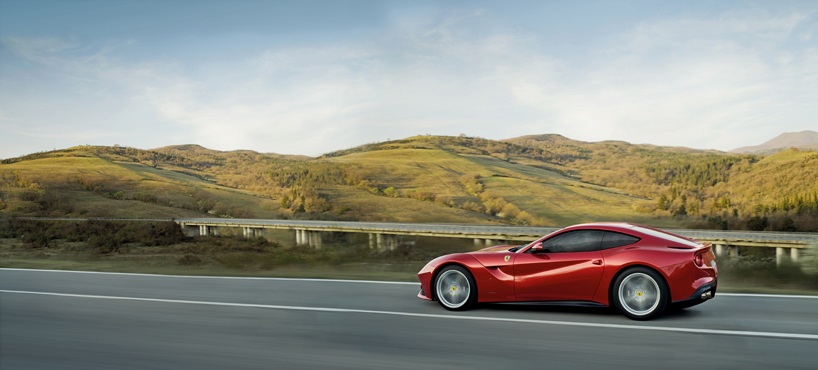
designboom (DB): ferrari won a compasso d’oro for the F12berlinetta: what does that represent for the company?
flavio manzoni (FM): the compasso d’oro is historically a very significant design award and I can assure you it is a great honor to receive this distinction. it’s a testament to the quality of the work put in by our design team. the list of companies and designers who have had the compasso d’oro bestowed on them over the decades reads like a who’s who of italian design, therefore it means a lot. ferrari is a company that represents italian excellence in the world, and to receive this prize at a time when the country is going through a difficult phase only serves to boost our pride and confidence.
DB: what was the inspiration for the F12berlinetta?
FM: the concept of the car is to be found in the essential values of the classic ferrari front-engined V12 2-seater coupé. pure, efficient, aerodynamic, lightweight. the fastback proportions with the rearward position of the cockpit work perfectly with the long bonnet and low overall height. the forward slant of several lines in the side view confer it additional purposefulness and character.
there was no straight inspiration from the past when we set out to design the F12, but if there is one ferrari berlinetta which I admire and which helped us set the tone, it would be the 250 GT SWB. there is an unmatched balance in that car between a clean volume, elegant lines, simple yet full surfaces, pronounced muscle, fantastic stance and proportions which define an ideal formula still worth aiming for today.
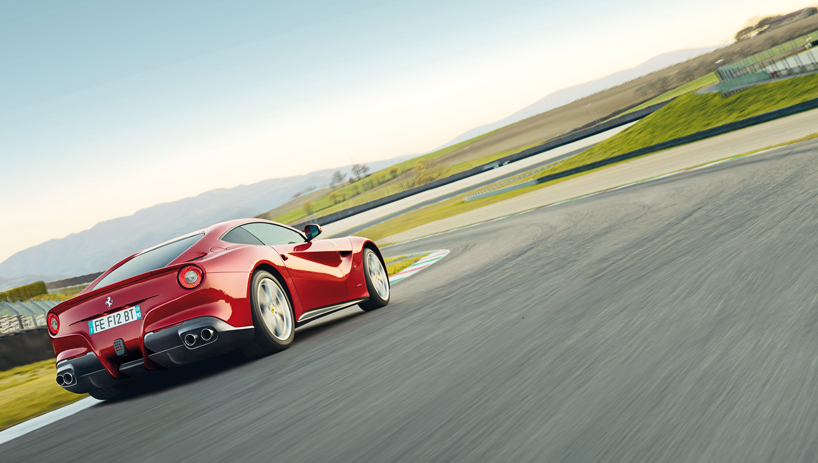
from the formula one-derived 1953 375 america to the daytona 1969 365 GTB4 and highly sought-after 250 GT, there have been a handful of 12-cylinder models built at maranello that have written the books in automotive history. the story continues with ferrari’s latest mid-front 12-cylinder, the F12berlinetta – a super car that might just make you rethink the definition of adrenaline rush. powered by a naturally aspirated 740 horsepower V12 capable of delivering 690 lb-ft of torque, it was the most high performance ferrari ever built when it was introduced to the public in 2012.
while delivering performance figures of 0-200 km/h in 8.5 seconds, the engineering marvel still creates a sense of composure when driving at lower speeds – whether through swooping italian landscapes, narrow hair-pinning roads or simply across a congested city center. the experience of having a seven-speed F1 dual-clutch transmission to your disposal makes shifting gears a dream. shifts are completed before the blink of an eye and with zero lag thanks to an overlap between the opening and closing phases of the two clutches and the independent management of odd and even gears using two different in-put shafts. to help cut the car’s overall weight, an E-diff3 electronic differential has also been integrated into the gearbox.
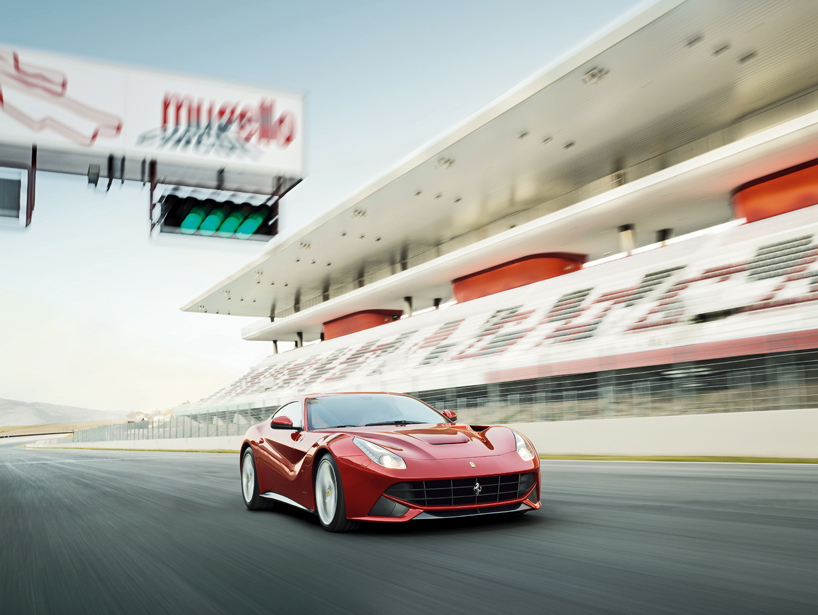
in the ongoing collaboration between the ferrari style centre and pininfarina, flavio manzoni worked in tandem among designers and engineers to sculpt its surfaces so that they seamlessly incorporate the car’s many innovative aerodynamic solutions by ‘subtraction’ rather than having it bristling with different appendages. the result of this collaboration is an innovative system of air flows which make this car absolutely original and unique, a true marriage of technology and aesthetics: both interior and exterior are centered around perfectly balanced proportions, sleek and aggressively sculpted lines, while still offering a level of luxurious comfort despite its compact dimensions.
the front of the car is dominated by an imposing grille that draws air into the engine bay to cool the V12 power unit. on either side of it are the electronically-controlled guide vanes which help cool the brakes. the rear of the F12berlinetta is characterized by a modern, functional reinterpretation of the KAMM tail which seamlessly integrates the two vertical fences of the rear diffuser. the resulting original T-shape also incorporates two full-LED circular tail-lights and the clearly F1-influenced rear fog light.
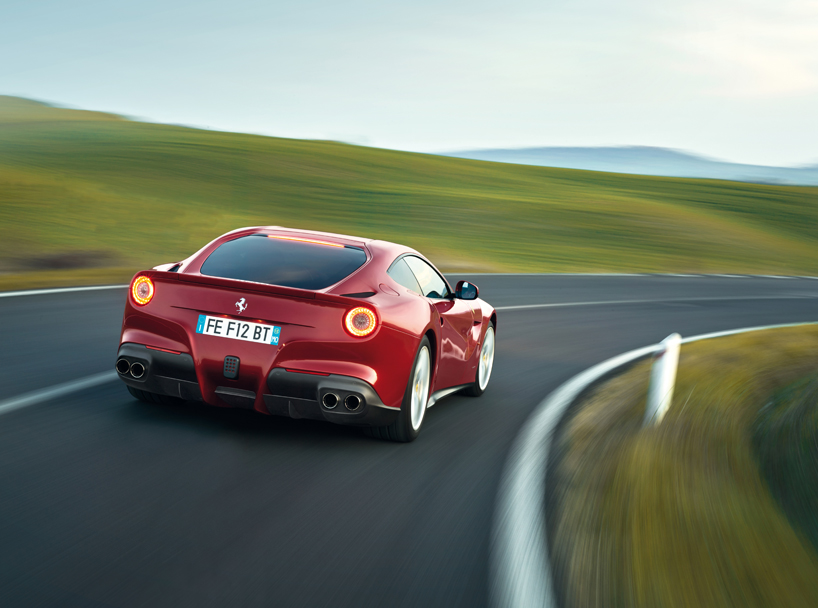
DB: what design elements were emphasized on the F12berlinetta?
FM: the front is characterized by a potent, open radiator intake, with the bonnet stretching above two side keels ahead of the wheels. this generates a floating effect, akin to that of a catamaran, breaking up the mass of the hood and generating a feeling of lightness. on the sides of the main intake grille we have two ducts which open and close electronically to improve brake cooling when required, reducing air resistance when shut.
the other defining elements of the front view are of course the headlights, which extend vertically atop the crest of the fenders. the DRL arrangement emphasizes the wide stance and further enhances the lighting signature typical of current ferrari road cars.
the aero bridge and deeply carved flanks create downforce and, by guiding the air to the flanks, reduce drag. the rear theme is a new take on the truncated tail concept. here the idea was to marry it effectively with the design of the rear diffuser, to create a dynamic T-shaped link between the two. it results in a pleasant integration of key elements which would otherwise have had a very static relationship.
allow me to also mention the interior briefly, as I think it is particularly successful in expressing lightness and sportiness, yet it is greatly enhanced by fresh elements such as the crisp aluminum air vents. they were influenced by aeronautic details, combining to create a very technical but, at the same time, a richly crafted look, very fitting for ferrari.
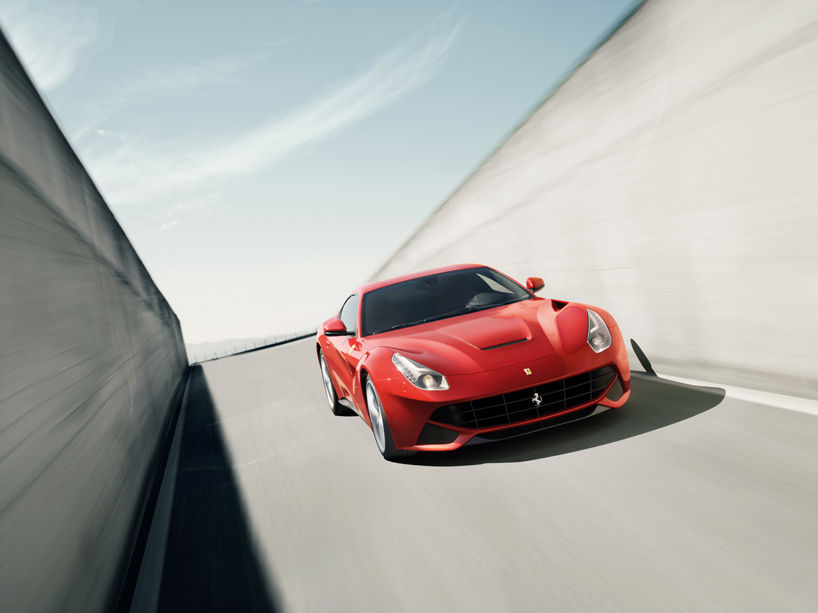
DB: how do elements from formula one directly influence the design of ferrari vehicles?
FM: I would say formula one influence is generally more subtle than your question suggests. of course, if you take the example of the F12berlinetta’s central rear fog light, it is a direct re-interpretation of a formula one detail, which I think adds a nice touch, as it fits very well with the design of the rear diffuser. but such direct citations are the exception more than they are the rule. it’s more a case of our design language sharing, for example, the general philosophy of carefully shrink-wrapping smooth surfaces closely over the mechanical parts to generate a very efficient and slippery skin.
you will also notice that, contrary to formula one, we integrate aerodynamic functions on the bodywork as seamlessly as possible. on a sports car like the F12berlinetta, surfaces are sculpted carefully in function of air flow with an aim to avoid the need for any appendages. such appendages are more suited for what we call special models, like our track-oriented XX programme. what we share with F1 is also methodology – in other words, the way we approach the aerodynamic design of our models, with extensive use of CFD software developed by the F1 team as well as fine-tuning in the wind tunnel.
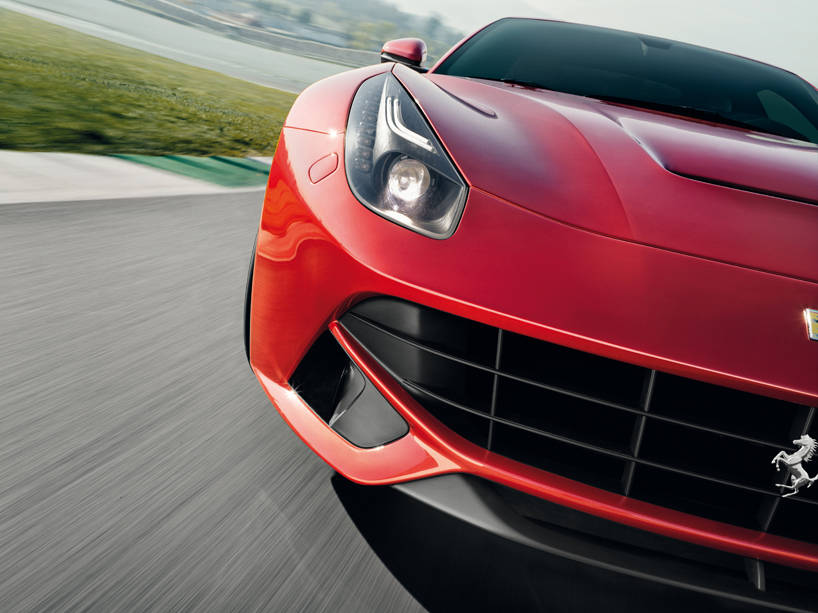
sleek lines with contoured sculpted flanks curve and dip to channel the air flows from the hood
the aerodynamics were developed hand-in-hand with the styling department, using computational fluid dynamic simulations in the wind tunnel at maranello. aerodynamic efficiency is mostly generated by three elements: the aero bridge, the blown spoiler, the aerodynamic under body. for the first time in ferrari history, the introduction of an aero bridge uses the car’s hood to create down-force, a blown spoiler is used to channel air flows near the rear of the car to modify the pressure field in the wheel well, and drag is also reduced by the active brake cooling system. as a result, the F12 boasts a drag coefficient of 0.299 and produces 123 kg of down force at 200 km/h. the berlinetta’s space-frame chassis and body-shell have also been completely redesigned and use different types of materials and technologies, many of which originated in the aeronautical industry. according to ferrari, ‘no fewer than 12 different types of alloy have been used, including two new structural alloys.’
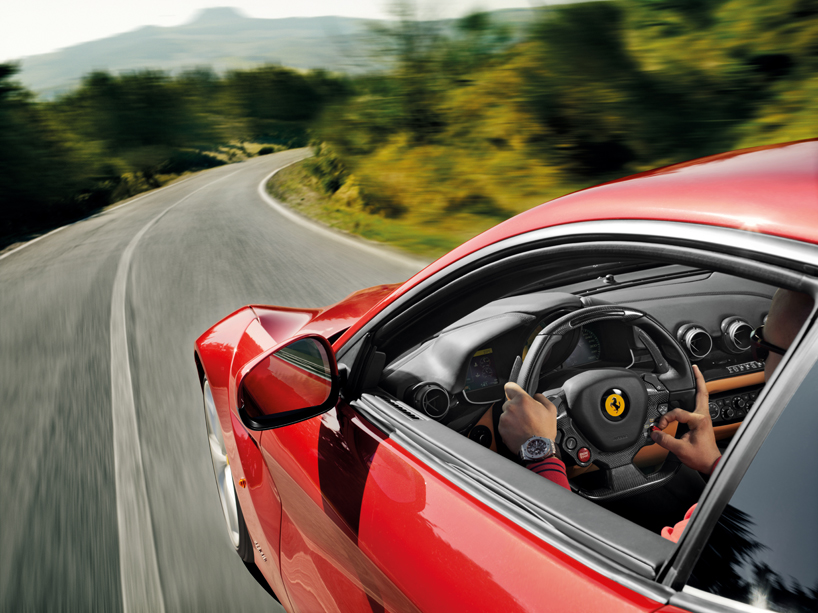
the two aerodynamic channels pass below a bridge between the front wheel arch and bottom of the a-pillar
DB: how would you describe the design process at ferrari?
FM: the creation of a new ferrari is always a very special occasion. we go searching after a shape which can capture and transmit the very essence of the brand. this represents a challenge to ourselves, while in doing this our mind is turned towards future scenarios.
in practical terms, the design ideas are expressed very freely at first, then quickly we seek a first convergence with the aerodynamic engineers to select the concepts which seem to have more potential for development. the general design process is not dissimilar to that of other automotive design studios, but I would say the development of aerodynamic concepts takes center stage early on and on the F12berlinetta is an example of the positive effect this can have on the design. we are available to develop innovative and highly original solutions like the aero bridge (between the bonnet and wing) which add value to the overall design.
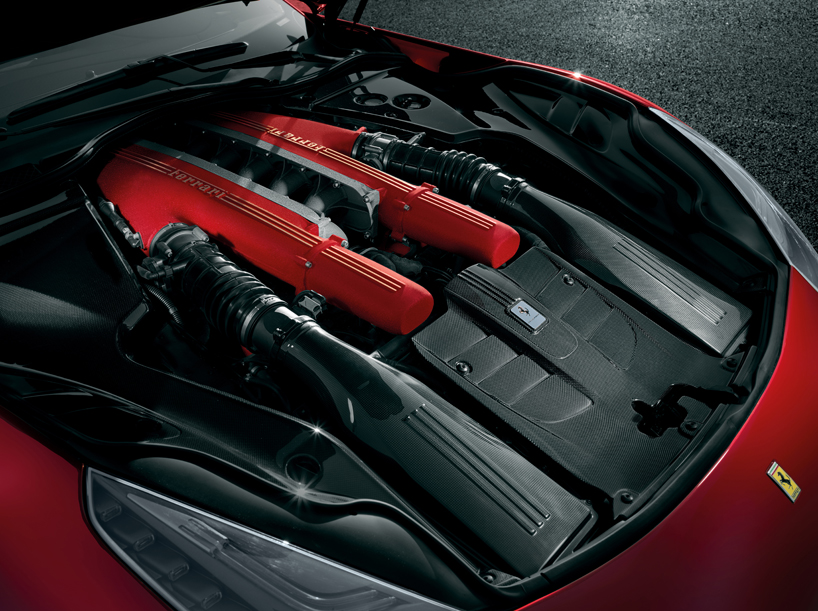
view of the F12berlinetta’s naturally aspirated 200-bar, direct-injection 6262 cc 65° v12 engine
DB: what is the most important risk you have to take when designing a vehicle?
FM: the greater risk would be to find ourselves unable to express something new within the boundaries of our brand identity. there is a relative lack of courage nowadays in car design, which in fairness is not directly imputable to car designers themselves. but indirectly perhaps designers should feel responsible if they have come up with innovative concepts but haven’t shown sufficient strength, while keeping to the company’s brand values, to bring them through to production.
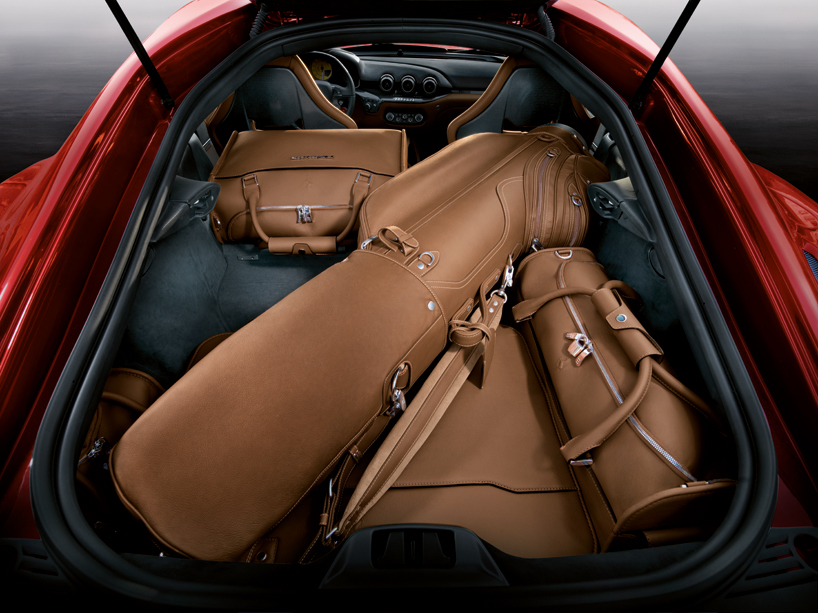
the rear of the cockpit features an upholstered rear bench with leather luggage straps to hold bags securely in place
DB: how do you keep a level of consistency when designing a car?
FM: this is the challenge we are faced with every time we work on a new ferrari. the challenge resides in coming up with a completely new shape while staying true to the values ferrari stands for. any repetition of design ideas invariably gets dismissed by our president mr. montezemolo as ‘déjà vu’. the basic rule is that a true ferrari must be immediately identifiable even without any badging. contrary to other brands we do not rely on a precise set of design guidelines which can be simply implemented across the model range. we instead call upon on a higher paradigm and need to come up with a fresh interpretation of it every time. with each new model we search for that subtle link with tradition and with the other models in the line-up. it is not a link that derives from the repetition of ‘graphic’ traits, but from the comprehension of the kind of plasticity and formal language a ferrari lives by.
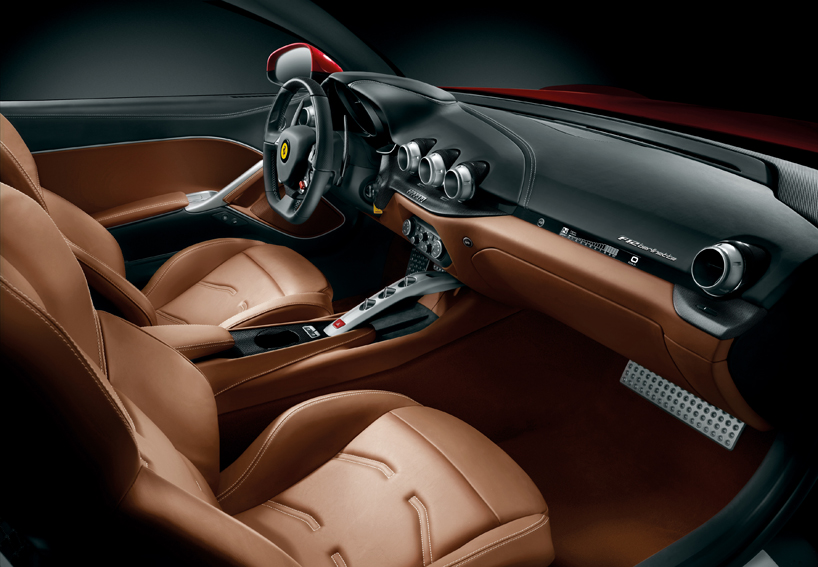
the design’s strongest feature is the ergonomic layout of the various functions within the cockpit
volumes in the F12’s cabin have been reduced to a minimum; the interior space has been optimized to ensure an comfortable and performance-centered driving experience. drawing from ferrari’s core DNA, a balance is seen between advanced technologies and the hand-executed detailing of the frau leather seats and trim. the main objective with the seats was to reduce their volumes as much as possible to ensure a level of occupant movement within the cabin while, at the same time, ensuring they are extremely comfortable and respect lateral containment geometries. the headrest is fully integrated into the backrest, giving the seat a very modern, track-inspired feel.
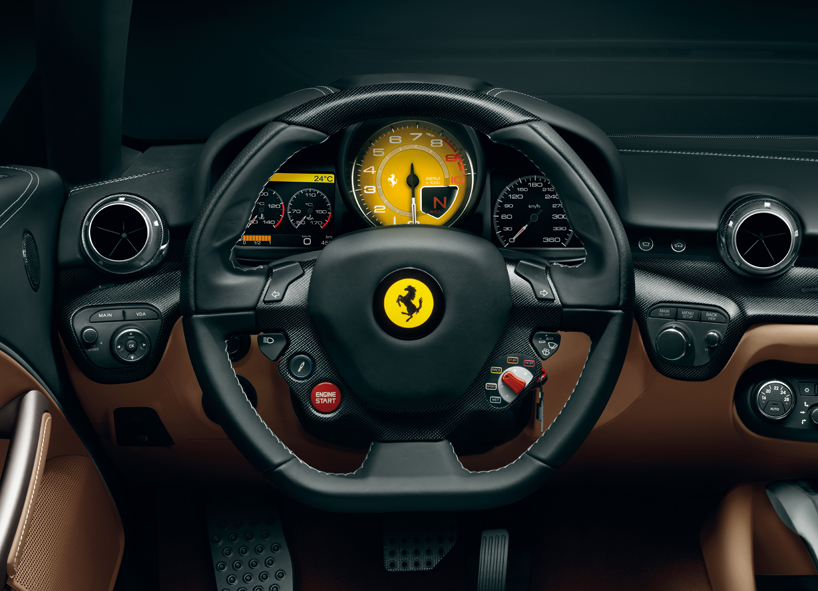
the F12berlinetta’s racing steering wheel – or as ferrari puts it, ‘manettino’ – puts the emphasis on sporty driving on high grip surfaces, offering drivers ample scope to adjust the electronic control system settings. on the dashboard, the right-hand satellite pod features the controls for the corresponding TFT screen which displays infotainment information. it is also used to control the satellite navigation, stereo with audio streaming via bluetooth, voice-activated track, artist, album and song title selection. it is also possible to use a smartphone to connect to internet to listen to web radio, podcasts and download apps.
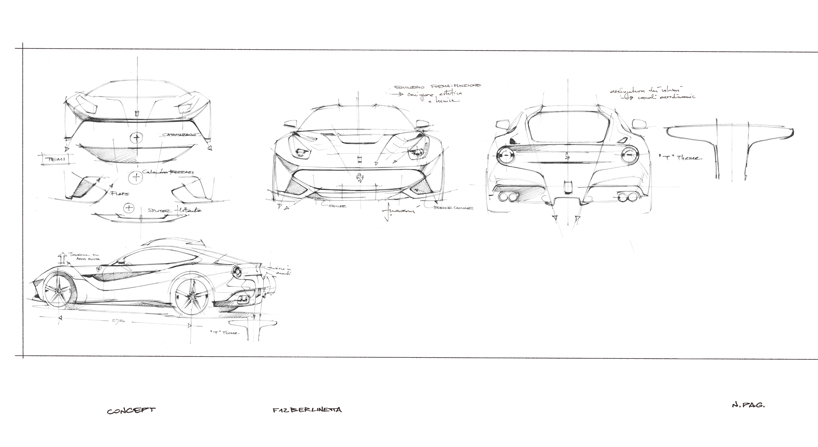
design sketches of the F12berlinetta
DB: in terms of process, what stages of development do designers find themselves most invested in?
FM: obviously designers are passionately involved in the early design research, when one has to set a project in motion with the force of one’s ideas. but that same passion is carried through the following development stages. in fact we can identify two main phases in the industrial design process: first a phase of strong expansion, an explosion of ideas spanning 360°, then a convergence phase during which the strongest and most relevant of those ideas emerge on top. extracting the most beautiful substance out of the initial burst of creativity makes it an equally demanding phase for the designer. clearly from there follows a more technical phase in which we need to defend the concept, so as to maintain its integrity and validity in the face of the process of industrialization.
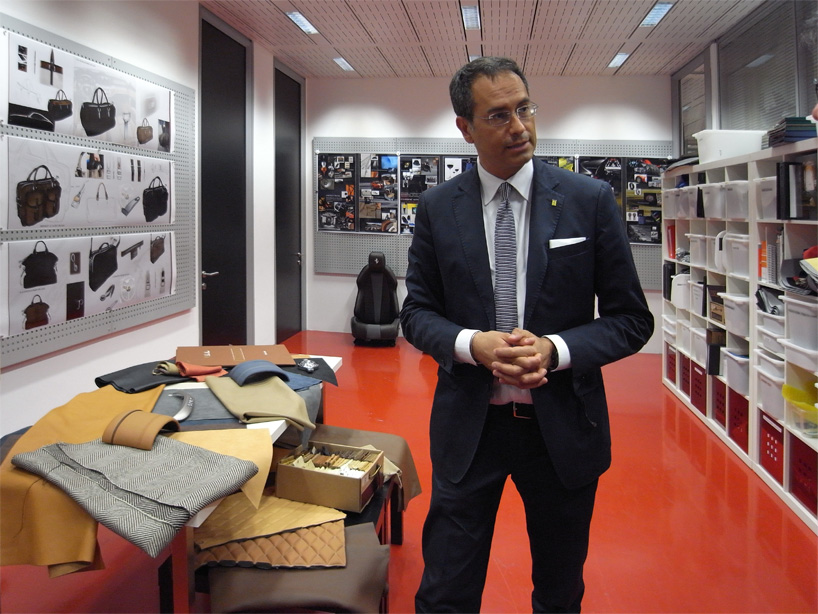
flavio manzoni at the design center in maranello
image © designboom
DB: are there certain aspects in the engineering phase or vehicle architecture that take longer to develop?
FM: I tend to think the design of a ferrari as a three-dimensional sculpture, both technical and sensual at the same time. the process that takes longest is marrying those two seemingly competing aspects into shapes that flow well together. at ferrari every form we come up with has to be justified, our design language is not organic. we cannot allow ourselves to delve in any superfluous effects or artifacts. we have to be extremely rigorous in order to reach a great purity with our form language, and any shape is driven by function, whether aerodynamic or other, never by gratuitously aesthetic reasons. a kind of natural selection process thus takes place whereby, step by step, all solutions hinging solely on aesthetics get filtered out. ferrari cannot be self-referential, here the concept of beauty does not represent an end unto itself.




FERRARI (68)
PRODUCT LIBRARY
a diverse digital database that acts as a valuable guide in gaining insight and information about a product directly from the manufacturer, and serves as a rich reference point in developing a project or scheme.
